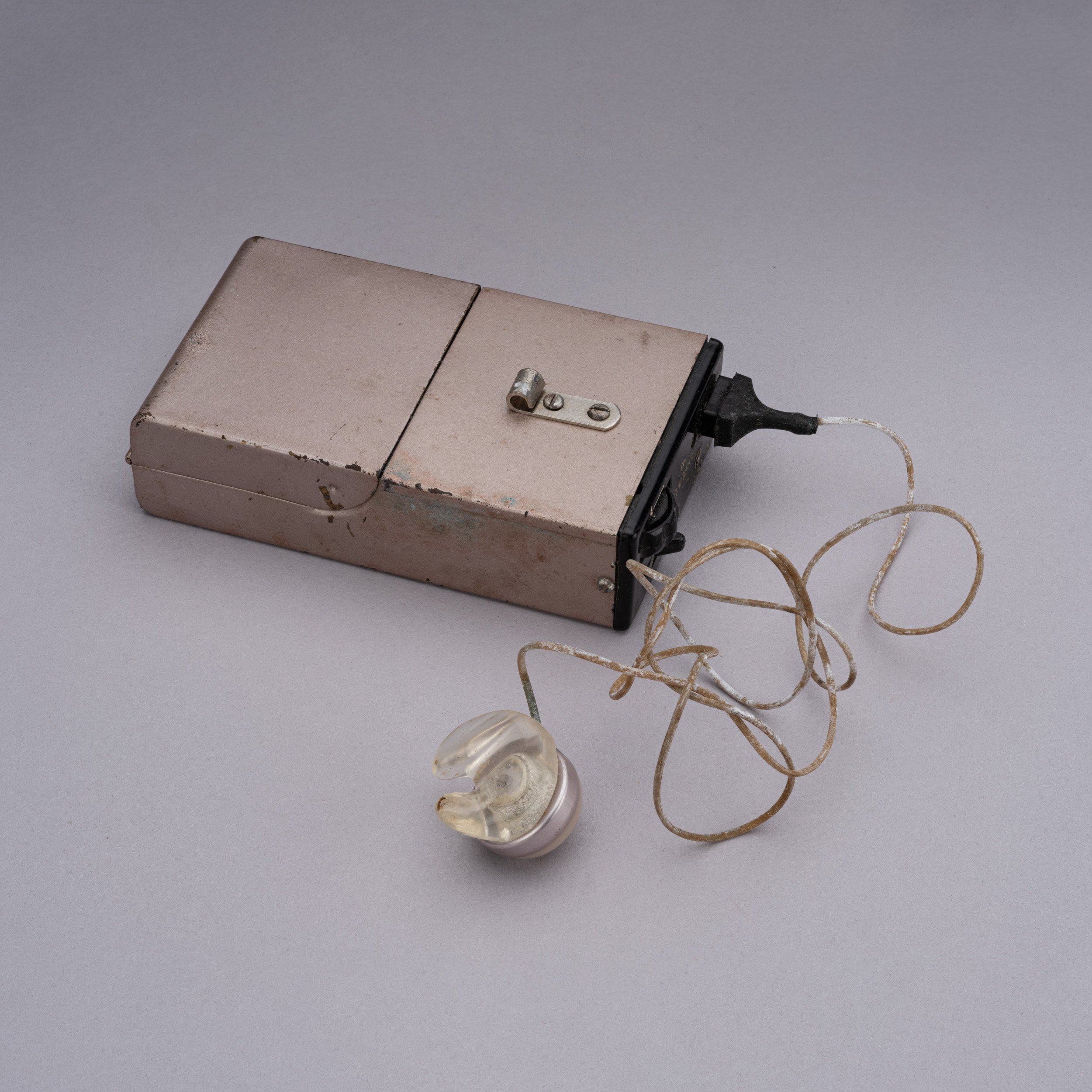




Ardente hearing aid and Amplivox Loop Listener
These two hearing aids are examples of technological advances in hearing devices during the 20th century.
Historically, larger ear trumpets made from animal bones were used to help with hearing for deaf and hearing loss. With technological advancements, hearing devices have continually shrunk in scale. Through the development of batteries during the 20th Century, hearing devices became portable and discreet. In both the AMPLIVOX and Ardente hearing aids, the battery pack is carried alongside the ear-piece in a separate compartment.
Ardente utilised the new battery and microphone technology in creating hearing aids during the 1920s and 1930s. The device is made up of a chest piece, circular adjustable microphone, ear plugs, and an earpiece attachment which would be placed on the head. This hearing aid uses bone conduction transmitting sound through to the inner ear with vibrations through the bone skull.
The size of the mid-century AMPLIVOX hearing aid is designed to fit into a pocket with volume dials on the top for easy access. The battery-pack nature of these hearing aids means portability for the user increases. The pink wire, clear ear-piece, and smaller size make for a much more discreet experience for the wearer than the ArdentE hearing aid. This device uses Loop Listening technology, where users can tune into a Loop Listening system which are used in many public areas, to provide sound without loss of clarity.
Interestingly, a receipt exists from the previous owner of the Amplivox hearing aid who sent back the device for fixing after the battery was inserted incorrectly. Despite the great advancements in technology, acknowledging the everyday experiences of the people who used the devices is important, with both the positives and limitations.
In the digital age, the wire has been replaced with wireless technology and much smaller discreet batteries.